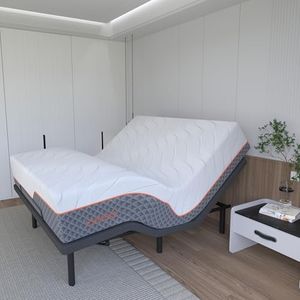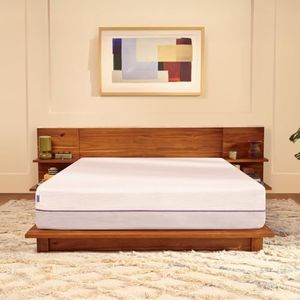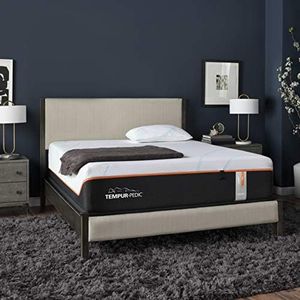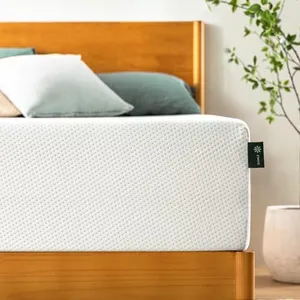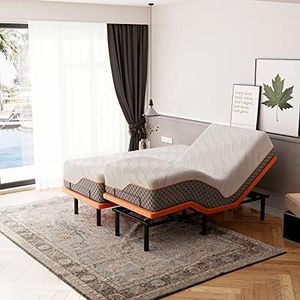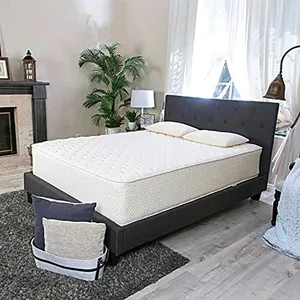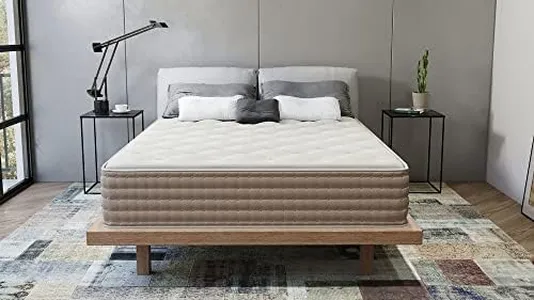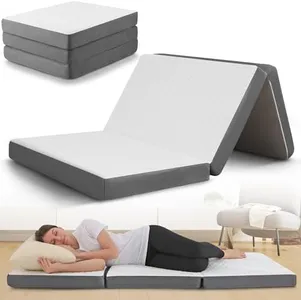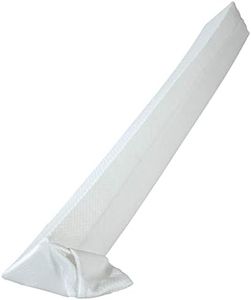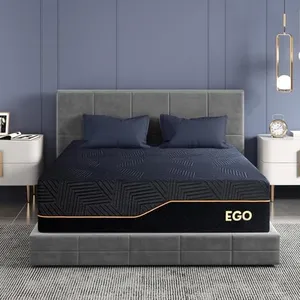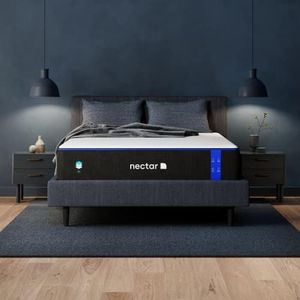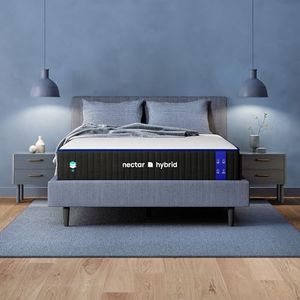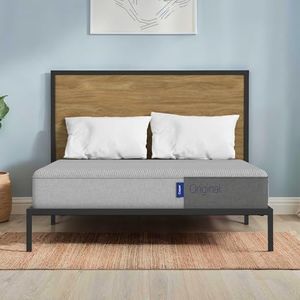10 Best mattresses 2025 in the United States
Our technology thoroughly searches through the online shopping world, reviewing hundreds of sites. We then process and analyze this information, updating in real-time to bring you the latest top-rated products. This way, you always get the best and most current options available.

Our Top Picks
Winner
Purple Plus King Mattress - 11" GelFlex Grid, Premium Comfort Foam, Better Than Memory Foam, Temperature Neutral, Responsive, Breathable, Pressure Relief, Made in USA
Most important from
203 reviews
The Purple Plus King Mattress offers a unique combination of 2 inches of GelFlex Grid technology and an additional layer of premium foam, designed to provide excellent cushioning and support. This mattress is particularly good at cradling pressure points like the hips and shoulders while maintaining proper body alignment, making it a solid option for those who suffer from body aches and pains. The GelFlex Grid also features over 1,400 air channels which, along with the breathable foam base, help regulate temperature, ensuring you stay comfortable throughout the night. This feature is especially beneficial for those who tend to sleep hot.
The mattress is hypoallergenic, made with recyclable and food-grade materials, making it a safe choice for individuals with allergies. Additionally, it is certified by CertiPUR-US and Clean Air GOLD, ensuring it meets high safety standards. The instant response of the GelFlex Grid means the mattress adjusts as you move, providing consistent support without feeling stuck.
On the downside, the Purple Plus mattress is categorized under memory foam construction, which may not appeal to those who prefer traditional spring mattresses. While its edge support is decent, it may not be as robust as some other mattresses, which could be a consideration if you frequently sit or lie on the edge of the bed. The mattress is 11 inches thick, which should fit most standard sheets and bed frames. Made in the USA, Purple's attention to quality and innovation is evident in this product. With a solid 4.5 out of 5 stars from customer reviews, it seems to be well-liked by most users. However, it’s always a good idea to try it out if possible, as personal comfort in a mattress can be quite subjective.
Most important from
203 reviews
Tempur-Pedic LuxeAdapt 13" Pressure-Relieving Memory Foam Mattress with Cooling Cover, Firm Motion Cancelling Memory Foam Mattress, King
Most important from
57 reviews
The Tempur-Pedic LuxeAdapt 13" Memory Foam Mattress is designed for those seeking a luxurious and firm sleeping experience with excellent support. It features a cooling cover made from high-molecular-weight yarn to keep you cool throughout the night. This king-size mattress measures 80" x 76" x 13" and includes four layers of memory foam engineered by NASA, which conform to your body shape for maximum pressure relief and superior motion isolation.
This makes it ideal for couples, as movements on one side of the bed won't disturb the other sleeper. The firm feel provides substantial support, which is beneficial for those who need extra support for their back and spine. However, this firmness may not suit those who prefer a softer sleeping surface. Additionally, the mattress is quite heavy at 152 pounds, making it difficult to move or adjust.
The Tempur-Pedic LuxeAdapt is backed by a 10-year limited warranty, ensuring durability and long-term support. While its cooling features and conforming support are impressive, the mattress is on the pricier side, which might be a consideration for budget-conscious buyers. It has a solid customer rating of 4.1 out of 5 stars based on 49 reviews, indicating general satisfaction among users. This mattress is best suited for individuals who prioritize firm support and cooling features in their bedding.
Most important from
57 reviews
ZINUS 12 Inch Full Green Tea Memory Foam Mattress [New Version], Fiberglass free, Medium Firm Feel, Zoned Pressure Relief, Certified Safe Foams & Fabric, Mattress in A Box
Most important from
165086 reviews
The ZINUS 12 Inch Green Tea Memory Foam Mattress is a solid choice for those seeking comfort and support in a full-size mattress. Its medium-firm feel strikes a good balance for various sleeping positions, making it suitable for side, back, or stomach sleepers. The zoned pressure relief technology addresses aches and pains, which is a significant advantage for anyone with joint discomfort. Additionally, the infusion of green tea and charcoal helps keep the mattress fresh, promoting a healthier sleep environment.
One of the standout features is its safety certification. Made from CertiPUR-US certified foam, the mattress is free from harmful chemicals, ensuring a safer sleeping surface. The 10-year warranty adds peace of mind regarding durability and potential defects.
While the memory foam provides excellent motion isolation, which is great for couples or light sleepers, some may find it retains heat, especially if they tend to sleep hot. Adequate edge support is also an area where this mattress may fall short; individuals who often sit on the edge might feel a bit of sagging. In terms of delivery, this mattress comes in a compact box, which is convenient but requires 24 to 72 hours to fully expand after unboxing. Additionally, while the weight limit is generous, heavier individuals might want to explore thicker options for enhanced support.
Most important from
165086 reviews
Buying Guide for the Best mattresses
Choosing the right mattress is crucial for a good night's sleep and overall health. The right mattress can help alleviate back pain, improve sleep quality, and ensure you wake up feeling refreshed. When selecting a mattress, consider your sleeping position, body type, and any specific health concerns you may have. Here are some key specifications to consider when choosing a mattress and how to navigate them to find the best fit for you.FAQ
Most Popular Categories Right Now
